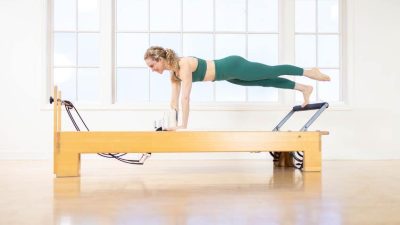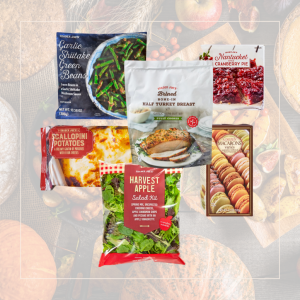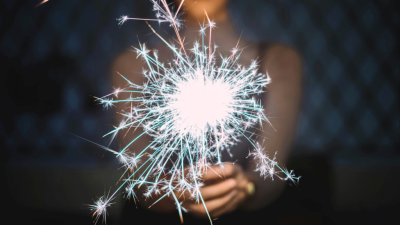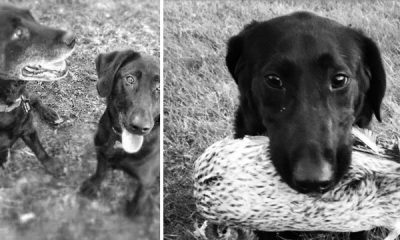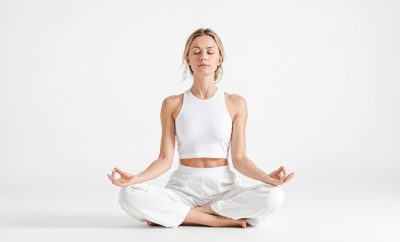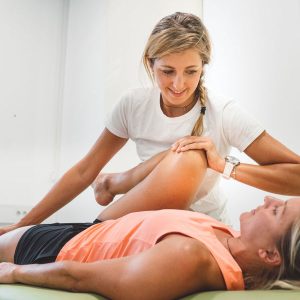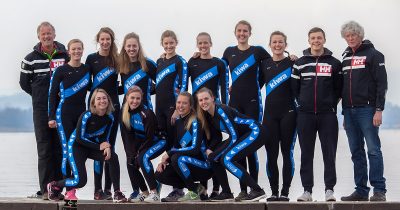
Read Full Transcript
This class that I’m teaching now is called A, this is letter A. This class is awareness today. In order to know where you’re going, kind of like in your GPS system, you have to know where you are. So in our class today, it’s about awareness. So to start anything out, I like to start with the breath.
We have to invite the breath. We have to be aware of our body. We have to feel the feet. We have to notice all sorts of things around us. So let’s tune in to what we’re feeling and let’s notice some of the different things that we can ask our body to do.
First, we’re gonna start with the breath. And you’re just gonna start by reaching your arms around, taking an inhale, taking an exhale. And some of you might be thinking, oh gosh, this is so simple. This is so silly. But you know what?
It’s not, it’s all good. The rotation of our bodies and the movement of our breath help us to move freely. One of the most important parts of our body is our rib cage or our rib package. So as we rotate, say our body to the right, it’s the power and the drive through the left leg. And then as you turn and rotate your body to the left, it’s the power and drive through the right leg.
Let’s try that a couple of times. Inhale, reach, rotate. You’re going to hear this a lot, reach, rotate. Inhale, exhale, center. Inhale, reach, rotate, center.
Put a little stop sign out and go reach, come back to center. Reach, come back to center. Now arms come to center. Make a big circle with your arms. I call this like driving a big old school bus.
Twist, exhale, center, inhale. Exhale, center, stay with me now. Inhale, rotate your torso to the right, pressing into the left leg because the left leg drives your torso to the right, and come back to center. As you rotate to the left, it’s your right side that drives you to the left. Come back to center.
Let’s do two in a row. Inhale, exhale. Inhale, exhale. One more time, inhale, exhale. Last time, exhale, bring yourself back to center.
Now we start our wave up. Inhale, exhale, big circle. Inhale, exhale, slightly bend the knees, if you can, back to center. One more time, up. And then, arms come all the way down to center.
Now let’s take your right leg, step it out in front of you just a little bit. Take your left arm out in front of you. And then, we start to reach and reach and reach and rotate. Again, doesn’t make any difference how far you go, but you wanna combine the reach and the rotate. One more time, the reach and the rotate.
Notice it’s not your neck overworking. The reach of your arm is from the back of your shoulder blade. I’m gonna do it again, reach. One more time, reach with that left arm. Rotate torso to the right and pause.
Can you give it a couple of pulses? You’ll notice that my left arm is not crossing midline. It keeps reaching forward. The reach is so important because that starts to build the rotation. You’ll hear that pattern again and again.
We’re going to switch legs. Now your right arm is reaching out, reach, return. Reach, and don’t rotate for a couple. Notice how you can reach your arm, not shrugging, okay? We don’t wanna shrug, we wanna reach and then rotate.
Reach, play with your breath. Exhale on the rotate, come back. How about if you inhale? Sometimes we forget the inhale. And your inhale fills up your breath.
It doesn’t grip you up, but it fills you up. So now with some counting on the breath, watch. Two hands are going to reach to the right side. I’m gonna breathe for four counts as the hands go around. Inhale, exhale.
Inhale, two, three, four. Exhale, two, three, four. Inhale, reach, rotate, two, three, four. Release, two, three, four. One more time, reach back of the left heel pressing, all those things coming together, and then return.
And now reverse it. Inhale, reach to the left around. Exhale, inhale, reach. Exhale, the inhale is hard. Don’t be shy with your breath.
One more time. Inhale and exhale. Just rest a second. Tell you one little thing. When you reach your arms forward, when you reach your arms forward, it has the response of drawing the ribs back.
When you reach your arms forward, the response is to draw the ribs back. I say that several times because you’re going to see it throughout our practice. Okay, one more time, now the breath sideways. Inhale, left arm up, side bend. Inhale, come up.
Inhale for four counts. Lifting the right arm, inhale, exhale. Use your breath. It doesn’t have to look a certain way. It has to be an invitation for your body to fill up and not grip up.
One more time each side. Inhale, are you pressing down into your feet? Your feet are your base. And then bring yourself all the way up, good. Some nice standing exercises for the breath and the ribs.
Notice now that you have an expansion, you have an availability, you have space. Space is good. And space is good in Pilates because it allows us to lengthen. So let’s continue on with some heel raises. So we lift up and down.
Now the first time you do this, your body might think, oh, I don’t have good balance. Hang on to something if you need to, okay? But this is the most underused exercise that’s actually a very important one. We raise the heels and lower the heels. Raise and lower.
I’m counting these. There’s going to be 20. That’s a lot. Here’s four, here’s five. Press down into your feet.
You should start to feel your calves, the back of your thighs, and maybe even up to the back of your butt. At no time are you trying to arch your back or let those ribs come forward. You’ve already created all this expansion through your chest. I’ve already lost count, but we’re gonna call this 10, 11, and 12. A little extra’s okay, 13, they’re tiring.
14 and 15 and 16. Move the arms, 17, 18, and 19 and 20. Woo, wiggle your legs. Your legs should be active. They should be alive.
They should be moving. They are what carry us around. Moving to the feet now on the toes, you’re gonna raise the left heel. And then, you’re gonna roll your foot a little bit forward, a little bit back, and then down. Raise the heel, roll a little bit forward, little bit back, little bit down.
Sometimes we forget that the toes can actually curl forward. Don’t force it. Be careful with yourself. Be kind to yourself. Be compassionate with yourself.
First series here that you’re doing. This is the very beginner. We’re looking for awareness into our body and we’re looking for connections, one more time. And now you’re looking to come down on the ground, okay? So join me on the mat now.
Lying down on your back, just have your knees bent and your feet flat. And guess what we’re gonna explore first? Reach and rotate just like we did. So we’re just going to take your arm up to the ceiling, left arm up to the ceiling, reach it, and then press into that same side leg as you start to rotate, then it comes down. Notice my arm reaching from underneath my shoulder blade as I rotate.
I’m not doing a big trunk curl. I’m not doing a crisscross exercise. Although this will lead to that, but I’m reaching and rotating. One more time on this side, reach and rotate. Now I’m gonna hold this.
Notice that as you’re pressing, with this same side leg down and reaching, that you’re almost getting ready to reach and rotate and breathe into that back body, and then come all the way back. Other side, so the arm is not all the way up over the head like this yet. It’s just reaching directly to the ceiling. It’s reaching center. When I reach my arm up, my shoulder blade also reaches up.
Now I reach, reach over and rotate. My head can move, but I’m not shrugging my shoulders. Look at this. This is pain waiting to happen. We’re gonna let the shoulder blades relax and we’re going back to that arm, reach and rotate.
And now with the breath, inhale, exhale. Inhale, reach, come back down. One more time, reach and come back down. Now if you happen to be a little bit uncomfortable in your head and say, for example, that your head is like this, then you are a person that needs to stick a little something underneath your head so that your eyes gaze at the ceiling, and then your head is supported. So you can make that call.
You can use a towel, a small pillow or something like that. But if you can lie flat and don’t feel any disturbances, then you of course don’t need that pillow. Next exercise here are two arms up like my palms are flat, like I’m pushing something to the ceiling. Now remember, when I move my blades forward and up to the ceiling, the result is my ribs pulling back, which is going to get us ready for a trunk curl. As the arms reach up, the ribs respond by drawing back.
My legs are just in place. They’re gently pressing down. My bottom’s not gripping. We’re doing a couple more repetitions than usual because I want you to get the feeling of reaching and reaching and reaching and reaching. Press the same side foot of the arm that you’re reaching.
Press the same side foot of the arm that you’re reaching, and then rest. Moving on to the hips for rotation, it’s gonna be the same thing. So now as one of my knees drops in, I’m gonna reach and rotate. The reaching of the knee invites the rotation. This first part is about mobility and feeling good to create space so you have that awareness.
This class is ideal for you to do especially if you’re the very beginner because we’re looking for feelings. We’re looking for notice. We’re looking for awareness. Reach, rotate, we’re not gripping the butt. We’re not holding the butt in or the belly tight.
We’re just reaching and rotate. Now I bet you can guess what’s next: adding the arms. Reach arms one way, legs the other way. Everything center, reach and rotate. This rotation in our torso and in our bodies takes place in everything that we do starting with walking.
Reach and rotate, and then everything comes back. Now, next exercise, we’re gonna start a little tilt of the pelvis. So when we tilt the pelvis, my hands here are here, you don’t have to do this with your hands, but my hands are just trying to show you the curling up of the pelvis. I’m not over squeezing my butt and tightening everything. I’m just inviting my belly in as my pelvis curls.
We call this curling from bottom to top. Tailbone curling, tailbone curling. Now with the arms up, I’m gonna reach my arms up, which results in the ribs drawing back, and now I’m gonna curl again. So now my arms reaching up allow those back ribs to fall back. And then, I’m gonna add an inhale on the curl.
I’m gonna try to make you be able to hear it. Challenge yourself on the inhale. Exhale, one more time. You’re going to inhale up, hold, reach those arms, and then start to shimmy these arms. Because when you shimmy these arms in this tilt, it starts to get the rotation of your ribs, and then lower all the way down.
Continuing now with the bridge, a full bridge, I’m gonna take my legs a little bit closer. I’m gonna tighten my legs, pressing down into the ground as I just lift up into a low bridge. Nothing fancy here, you don’t need to say, oh, I thought my bridge needed to be higher and all that. Your bridge is your bridge and it’s time to build it. So when you build the bridge, you give it a base which is your feet, the feet press down.
Pressing down on your legs, tightens your bum. Reaching your arms up allows me to roll my ribs down first to articulate. So you don’t always have to think, tuck your bottom so hard, okay? So let’s let the bottom rest a little bit down here. Explore it, shift side to side a little bit.
Reach, right, there’s always a reach, always a rotate. And then tip, lift, hold. Reach the arms up, notice it’s not my neck shrugging, it’s just my blades coming around my ribcage. And then, I roll down. So now that you’re really good at that awareness of the bridge, watch what’s we’re gonna do now.
We’re gonna take the right knee into the chest. When I pull the thigh into the chest, it allows my pelvis to curl. Now this left leg, I’m gonna press down into the mat and I’m gonna press it to lift. When I hold my opposite knee into my chest and do this bridge, it will not let me arch my back. And that’s a good thing ’cause a lot of people, when they do their bridges, they hurt their back.
Yes, we’re doing this lots of times. Your leg should be tired. This is awareness. You can stop at any time. There isn’t really a modification for this.
The best modification to a one leg bridge is a two leg bridge. If you need to go back to two legs, you go back to two legs. We did one leg. Now we’re gonna switch the legs. Because sometimes you might notice that one of your legs feels different.
How great is that, that we’re not all perfectly symmetrical? It’s okay if your blades come up a little bit because remember your blades coming forward, just a smidge, allows your ribs to go back. I’m not shrugging in my neck. I’m not gripping my jaw. I’m gonna get five more of these in ’cause my right leg really needs this, three and four and five, legs come down.
Let’s go back to the swaying. Inhaling, can you inhale a little bit freer now than maybe you did in the first place, allowing yourself? All right, next sequence here is connecting with the core. So our core, the inside of our body, is a unit that provides us a space for some awareness and power. So your core doesn’t really move your spine by the way.
Your core, your deep, deep core allows you to feel that drawing in and connection to allow your arms and legs to do a lot of things. So let’s visit this now. You’re gonna take your left leg out long. I’m gonna take my hands and I’m just gonna put ’em on my tummy. I’m gonna breathe a couple times.
And then as I tighten up this left strong leg, I’m just gonna lift it up. And I’m first gonna notice, yes, I have leg muscles, they’re working. Ooh yes, I have belly muscles because it’s holding my trunk while I raise and lower my leg. Now if this is too hard, you know you can lighten this leg if you just bend it. So then you just bend it, and then you lift a shorter lever arm, just like that.
Now we’ll switch the legs. I like to start with the leg long lever because the heaviness actually allows you the ability to feel the center of your body as you lift it up. Here’s what it might look like if your core wasn’t connected. It might look a little something like this. And so if that’s the case, you gotta stop the exercise.
You have to lengthen out. You gotta get your breath. You have to center. And then, you’re gonna bend the short lever. And then, you’re gonna go, oh, oh, that’s much harder to not move everything all around.
Okay, let’s put those together. So left leg long, arms down by your side. Ooh, let’s have a little talk about those arms, okay? Just for a second. Remember, this is very beginner.
Sometimes people press their arms at the expense of the arm bone raising, we don’t want that. So maybe sometimes you have to let the arm bones rest and just let your arms rest hands on the belly. That’s a whole issue around the hands and the shoulders. So put your arms where they’re comfortable so that when you lift a straight leg, nothing changes. Let’s say that.
Nothing changes around the other parts of your body. Let’s do that, nwo more. Remembering that you can go back and revisit this video at any section so that you can feel and notice different things to create these key connections. One more time, so I could also invite this exercise to be a little bit different with my arms to the ceiling. So now with a straight leg, I’m gonna give a little push to the ceiling.
And as I push my blades to the ceiling, I’m not changing my neck or my face, but the push to the ceiling, remember, invites the ribs down. Now I feel my core very, very nicely. To somebody walking by, let’s switch legs. It wouldn’t look like much at all. But what we’re doing here is we’re using the weight of our leg and the reaching of our arms to create core connection in the center.
How great is that? Moving on, we have to create a diagonal connection in the front so we can get both legs up off the ground. So that looks like this. I’m gonna lift this leg first. This is my right leg.
I’m gonna take my left arm and I’m gonna reach it. And then, I’m going to push it into the inside of that leg. So reach it, push it, hold. Feel that connection through the right thigh, the right ribs, and right underneath this left arm and switch. Other leg, lift.
So we’ve already done that. We reach, we reach, we press, we create diagonals. We don’t press so hard that we change everything else. We press just enough and release. One more time, the right leg lifts, we press with the left hand.
Now we create that front connection, right? The core connection. And now I’m gonna hover this other leg up off the ground. You wanna hold your breath so bad, but I don’t want you to. Let’s inhale for four counts.
Inhale, exhale. One more time. Inhale, exhale, rest. That should have been challenging, okay? If you could only do it one time, that’s great.
Now let’s lift the left leg. Creating the lift, creating the reach. If all you can do is this, that’s fine. Next level, just hover that leg up on the second leg. On the other side, we reach it out.
But you know what, if you can’t reach it out, don’t reach it out. But if you can, go ahead. And as you do this, let’s do it this way, this time, reach and bend. Be curious what wants to change. For some people, they’re so locked in their core that they changed their head, you see?
And we don’t wanna change the head. There’s lots of information in here, lots of little tidbits. So let’s create this connection again, taking left leg, being aware, right arm, they press into each other. I breathe in. I breathe out.
I tone my tummy, right? Pulling it down. Heavying the ribs, other leg comes in. What if I just hold this here? What if I hold this till something wants to change?
And by change, I mean your head might wanna change, your ribs might wanna change, your belly might wanna change. We want to ask for the holding part. That’s the core connection, okay? Feet come down, they come apart again, we do this reach again. We do this reach again, hmm.
And then, we add the arms again because this is never ever a bad thing. Reaching and rotating. Okay, continuing on now to sideline, another nice typical place to be for our Pilates program here with the legs. First thing is you have to fix your shirt, right? You gotta dust off any dust on your pants or anything, right?
That’s a joke, okay? And it’s okay to have fun when you exercise. It’s okay to have fun when you move, okay? So let’s take both legs, bring them forward. And to make it a little bit more stable, let’s bend the bottom knee forward.
And we’re gonna take the top leg, this long lever arm, and just reach it out long. This front arm here is going to push down enough that it creates a connection in the front of my torso. And I’m just gonna hold this leg here. That’s all I’m gonna do. I’m gonna hold this leg until I feel something in the back of my bottom.
And then when I feel that, I’m gonna reach this leg so long that it’s gonna lift my bottom ribs. And that’s relative to size of your body, pieces of the ribs, trunk, clothing, et cetera. So then we’re gonna lift this leg up and down, guess what? It’s still not a neck exercise. If you’ve been necking through this whole exercise, that sounded funny, if your neck is in play, then other pieces aren’t participating.
So let’s relax the neck. If you need something underneath your head, you of course do that. And we’re lifting this several, several hundred times. Actually, you’re lifting it enough if you start to feel tired rest. What we’re doing here in this class on awareness is just noticing the things we can do to create connections, rest, and then go back and get them again.
So now let’s hold this and let’s take this front arm. What do you think we’re gonna do with it? If you said reach, you’re right. Watch, reach, rotate to the floor, come back. Reach, rotate to the floor, come back.
What am I doing with my leg? Nothing, I’m holding it. Reach and then come back. So that allows me to get out of the rigidness in my trunk by doing the reaching. Now we’re gonna kick the leg forward with the heel, point the toe, bring it back.
Forward with the heel. point the to, go back. Now, a lot of times when you do this, your trunk wants to respond by rotating. And you know what, we’re gonna let that happen. There’ll come a time when you might see a video or you might see me ask you not to move it.
That’s fine too. What we wanna do is something that we choose to do. So here I am allowing, we call this alternating motion, right? Diagonals, and then now we have stability motion with the hip. Both are very valid, and then let that leg come all the way down.
Turning to the other side, Bending the knees forward just a little bit. So you feel the bottom leg pressing down, taking the top leg out and long, reaching it long. When you lift up these bottom ribs, you wanna be mindful, be aware if you’re gripping into your back or are you filling up your breath? The answer is usually B, right? Anyway, my point is notice and be aware of your breath while you raise and lower the leg.
Not only be aware of the breath, but be aware of your neck. Be aware of everything extraneous that you might be doing. And so as you raise this left leg up and down, the bottom leg is actually pressing down. And then, we’re gonna hold the leg, take this top arm, reach. Sometimes I think I talking onomatopoeia, right?
Or whatever, so we wanna reach. You wanna think reach. I don’t know why when I say reach, it has to be so much longer, but it just does. One more time, we’re gonna reach, and then come back, and then build your kickstand again, and then up and down. And now front with the heel, toe back.
Inhale, exhale, filling up the breath. One more time. Good, now you’re gonna come to your tummy and then push yourself up to your hands and knees. So in this hands and knees position, we’re going to start to explore our spinal extension. We’re hitting the home stretch here, okay?
So in this hands and knees position, it’s really important that you choose a position for your feet to start with. Either both feet down or both toes curled up, right? So I’m gonna have my toes curled up because it lets me feel them a little bit differently. So in this position here, old school cat cow says I arch and round. Go ahead and do that.
It’ll already feel a little bit different to you because you know that you have to reach into the ground with your hands. This is a very common position for lots of Pilates exercises. I’m just turning my head side to side, pushing back and coming forward. This is weightbearing into the arms. I’m starting to understand the pushing down of my arms to get into my shoulder blades.
If I can’t press down on my hands because my wrists bother me, I can certainly come to my forearms. But when you press down, you wanna be sure that you’re not like over arched in the neck. So when you’re use your elbows, your eye should be glanced between your elbows. So that when I do any sort of rocking, my head’s not changing. If I wanna do cat cow on my forearms, it’ll be less range of motion, but it certainly is doable.
I’m shifting hips side to side. Now from here, you’re gonna bring yourself back to your knees, and come all the way up to high kneeling. In this kneeling position, if you can’t tolerate this, then you just go ahead and stand up. If you can tolerate this, you might need a chair on either side of you or the side of your bed. That’s certainly fine.
But this position right here is halfway to standing. So the reason why this position is important is it starts to allow you to feel your legs pressing down as you tighten your tush. So in this position here, we’re going to start by taking your right leg out in front of you like this, and then put it down. And then, you’re gonna take your other leg out and then put it down. And if you need to do it like this and go all the way around like this, and then crawl up your leg and then come up, that’s fine.
And then before you know it, you won’t have to do that. So you’re gonna come up really tall. And then, sit back. And then, come up really tall And then, sit back. And then one more time, really tall.
Arms come way up, big inhale. Big exhale, come down. One more reach and rotate. One more reach and rotate. One leg comes forward.
Use your hands to help you if you need to. Come on up. One more, reach and rotate. And one more, reach and rotate. Arms come together.
Reach down. One more breath, the inhale. At no time are you shrugging your neck. Oh, I just wanna do so many more reaches and rotates. But for now, that’ll be good.
And I wanna thank you. Thank you so much for joining me today.
